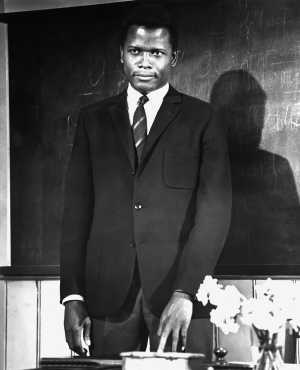Style is about the freedom to be oneself, to authentically express oneself, and in doing so reject limitations imposed by others. A consciousness of style, in essence, emerges when one asserts one’s right to self-definition and the right to take control of one’s own identity.
Black Ivy is a story about menswear. This is an untold story about style. A revolt in style. It’s a story about a generation of people challenging the status quo, demanding racial equality and civil rights. It’s the story of one of the most volatile and incendiary periods in American history, but it’s also a story about dignity and the fight for self-determination.
When it comes to this period and to dressing in Ivy style, it’s often mistakenly argued that black men appropriated this style out of a desire to be white, coming from a deep sense of inferiority.
In reality, the urge to wear these clothes was in no small part borne of the desire to demonstrate equality which had been so fiercely denied them in other ways.
Countering racist preconceptions, the goal was to be recognised as at least equal to the rights they were fighting for, not only in the eyes of the American mainstream but throughout the world. Rather than a sign of conformity and compliance, Black Ivy was a kind of battledress, a symbolic armour worn in the nonviolent pursuit of fundamental change. Making society treat them differently meant making the mainstream see them differently first. And they did.

Sprinter Tommie Smith who was cut from the US Olympic team in Mexico City after a demonstration on the Olympic victory stand arrives home in Los Angeles
Photo by Ed Widdis/AP/Shutterstock
Dressing in Ivy style was not new to Black society. In places like Washington, Chicago, New Jersey, and Harlem during the years between the First and Second World Wars, many Black professionals wore the Ivy look of the day.
In fact, for years, Black leader W.E.B. Du Bois, who also studied at Harvard, had an account at Brooks Brothers, and he’d regularly have tailor-made suits and shirts from their Madison Avenue store delivered to his home. And a young Miles Davis, his father being a doctor, was more than familiar with the style from a very early age.
But the Black Ivy style of the late 1950s and 1960s was more than just about clothes or fashion. It was a kind of sartorial power grab, one that in many ways had as much visual impact as the Black Panthers’ beret, rifle, and leather jacket that shot up in its wake.
Originally the goal was to convey an attitude of equity and structure within the creative context of musicians and artists, to present themselves as worthy of being taken seriously as artists. Then with the emergence of the civil rights movement, the look took another turn; still premised on the idea of equality and respect, it became synonymous with activism and progressive thinking.
In this way, the Ivy look was integrated into the language of rebellion and subversion, challenging the status quo while at the same time honouring it. To honour the status quo? That, after all, was the intention, to have equal rights within the already established democratic and economic system, not to overturn it. At least not initially, anyway.

Actor Sidney Poitier in the 1967 British classic To Sir With Love.
To many in mainstream America, particularly supporters of Jim Crow and those who believed that African Americans were inferior to whites, this image presented them with an overwhelming cognitive dissonance, upending the firmly held belief that Black people were to present themselves as underlings.
Within the look itself, there’s a wealth of variations that spin out of the initial Ivy foundation. Many of these variations come from the unique experiences of the Black Ivyists themselves – a sartorial embodiment of their lives – while others are simply responses to the needs and conditions of the times.
As a result, Black Ivy style became a thing in and of itself, distinct from Ivy but always related to it. Ironically, the characterisation of Ivy league clothing as quintessentially cool is due in no small part to the enormous, but until now relatively undocumented, influence Black Ivy style has had on mainstream culture – past and present.
The old adage, it’s not what you wear it’s how you wear it, is never truer than in the case of Black Ivy style, where the classic Ivy wardrobe was comprehensively raided and then remixed and re-envisioned, away from its elitist confines, away from its mass-market popularity, and into something heavily coded and intentionally revolutionary.
View on Instagram
Black Ivy: A Revolt in Style by Jason Jules is out now for £39.95. reelartpress.com
